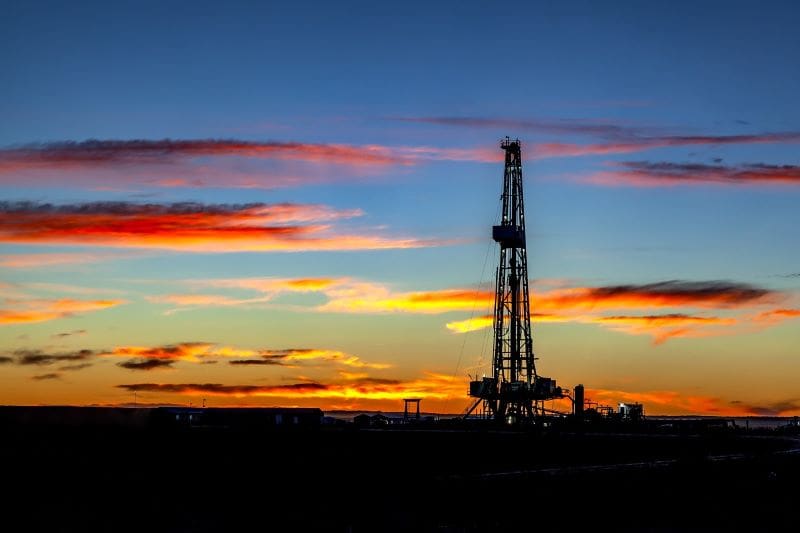With a federal lawsuit levied against Houston-based Apache Corporation on Tuesday, the Justice Department announced $4 million in civil penalties for unlawful air pollution spanning New Mexico and Texas. The Fortune 500 company violated the Clean Air Act in twenty-three of its assets in New Mexico’s Eddy and Lea Counties and Loving and Reeves Counties in Texas.
According to federal prosecutors, Apache failed to take the necessary precautions when storing oil at many facilities. This enabled an increase in air pollutants, which evidence indicates can cause serious health problems like lung irritation and respiratory illness.
“This settlement shows that oil and gas operators deserve greater scrutiny because too many are failing to comply with federal and state rules,” said James Kenney, environment cabinet secretary for New Mexico. “As a result, the bad actors will cause greater federal and state regulation of the entire oil and gas industry as ozone levels rise and public health suffers.”
Filed in New Mexico’s U.S. District Court, the lawsuit accuses Apache of contributing to excess emissions due to the unlawful storage practice utilized. Volatile organic compounds known as VOCs, nitrogen oxides, and carbon monoxide were all identified in the lawsuit as components released into the atmosphere.
According to the Environmental Protection Agency (EPA), VOCs and nitrogen oxides are “key components in the formation of ground-level ozone, a pollutant that irritates the lungs, exacerbates disease such as asthma, and can increase susceptibility to respiratory illnesses, such as pneumonia and bronchitis.”
Apache possesses a large footprint in the Permian Basin, the most significant domestic oil-producing play. Through air surveillance made by helicopter, EPA and state officials discovered the illegal emissions at the oil and gas company’s Permian assets. During the same period, air quality monitors in Lea and Eddy Counties discovered ozone concentrations far surpassing 95 percent of the national standard. The EPA channeled the use of violation notices sent to Apache but had little effect.
“Noxious pollutants directly threaten the health of neighboring communities while propelling our world toward climate disaster,” said Alexander Uballez, U.S. attorney for the District of New Mexico.
Apache is not alone in managing emissions failures. Another producer rooted in the Permian experienced similar violations. The Associated Press initiated an investigation in 2022 indicating that 533 oil and gas assets within the Permian were emitting excessive methane gas measurements. Apache released a consent decree on Tuesday focusing on resolving the alleged violations.
“Moving forward, the consent decree represents our commitment to continuous improvement across our facilities in the Permian Basin,” said Apache. “We also continue to collaborate with industry partners through organizations such as the Environmental Partnership and the U.N.’s Oil and Gas Methane Partnership in striving toward a more sustainable future.”
According to the agreement, 422 Apache oil and gas sites within the Permian will now comply with state and federal clean air regulations while offsetting the past’s illegal emissions. Experts point to an annual reduction in methane of nine hundred tons and 9,650 VOCs.
Although many within the Permian remain emissions compliant, Kenney suggested those failing to follow the regulations will catalyze additional enforcement over the industry at both state and federal levels.
“Simply stated, the message is ‘Do better,’” said Kenney.
Apache’s strategy to reduce emissions includes design improvements and installation of new tank monitoring systems to provide an early warning feature of potential release. This will allow for an immediate response. The company will additionally submit regular reports at the state level for continuous monitoring. While the new methodology might be challenging to manage, its long-term benefits initially should prop Apache and other producers up to legitimately and efficiently running their businesses into the future.
Nick Vaccaro is a freelance writer and photographer. In addition to providing technical writing services, he is an HSE consultant in the oil and gas industry with twelve years of experience. Vaccaro also contributes to SHALE Oil and Gas Business Magazine, American Oil and Gas Investor, Oil and Gas Investor, Energies Magazine and Louisiana Sportsman Magazine. He has a BA in photojournalism from Loyola University and resides in the New Orleans area. Vaccaro can be reached at 985-966-0957 or nav@vaccarogroupllc.com.
Oil and gas operations are commonly found in remote locations far from company headquarters. Now, it's possible to monitor pump operations, collate and analyze seismic data, and track employees around the world from almost anywhere. Whether employees are in the office or in the field, the internet and related applications enable a greater multidirectional flow of information – and control – than ever before.











